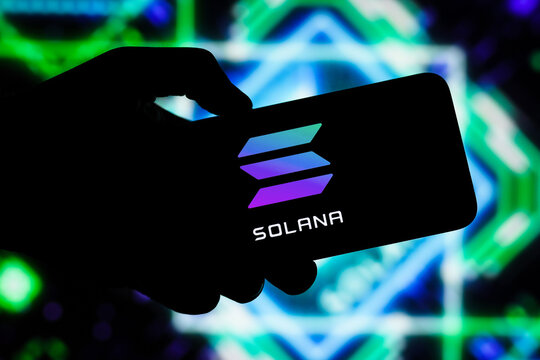In brief
- Steakhouse, a curator on Morpho, is sharing performance fees with Coinbase.
- The fees are derived from user repayments toward Bitcoin-backed loans.
- People are tapping the product to pay for cars and home improvements.
Coinbase’s newest lending product is generating profits for the crypto exchange in several ways, but not all are reflected clearly on-chain.
As the firm lets customers deposit wrapped Bitcoin and Circle’s USDC into “vaults” on decentralized finance protocol Morpho, it’s earning cash from stablecoin reserves and transaction fees indirectly. It’s also taking a cut of performance fees that are designed to incentivize risk managers on the platform, Coinbase has confirmed to Decrypt.
DeFi offers the promise of a more transparent financial system, but it’s unclear whether the arrangement poses conflicts of interest or could potentially put user funds at greater risk. Coinbase says that the initiative is addressing investors’ growing appetite for ways to use digital assets, unlocking financial empowerment.
In a statement to Decrypt, a Coinbase spokesperson said that the company “is committed to the sustainable success of its products.”
“We firmly maintain this philosophy when searching for collaborators that can help us bring simple, secure on-chain financial products to our users.”
The specifics of Coinbase’s arrangement with a so-called curator on Morpho named Steakhouse, through which users are effectively paying the exchange, are not referenced in an FAQ for its product. The FAQ does say that “there are no Coinbase fees,” and interest rates are set by “open lending markets.”
Vaults on Morpho allow Coinbase users to do two things: They can post Bitcoin as collateral for loans, or they can deposit USDC to earn yield. In essence, it resembles a circular market, which crossed $1 billion in originations on Tuesday.
As users make payments toward loans, a percentage of the yield that vaults generate is directed to “curators,” who serve as chief risk officers and strategists, according to Morpho’s documentation. It’s called a performance fee, and it’s customizable vault-to-vault.
The vault with the most deposits on Morpho is curated by a DeFi project called Spark. It is providing liquidity for Bitcoin-backed loans on Morpho, while taking a 10% slice of the 6% APY (annual percentage yield) that around $700 million in USDC deposits is currently generating.
Steakhouse, meanwhile, is curating a vault that currently lets Coinbase users earn 5.6% APY on USDC. Most of those funds are going toward providing liquidity for Bitcoin-backed loans as well, but the vault collects a 25% performance fee, among the highest on Morpho.
Steakhouse and Coinbase “share” the fee, the Coinbase spokesperson confirmed to Decrypt.
“Steakhouse USDC was selected as a starting vault on account of its collateral exposure being generally very liquid crypto assets which—along with the overcollateralization of the loan positions—creates an additional buffer for lenders,” they added, while highlighting an overview of Steakhouse’s risk management framework.
Decrypt has reached out to Steakhouse for comment.
‘Scale Infinitely’
As firms across the U.S. are integrating DeFi into their businesses, some onlookers are comparing the trend to mullets—centralized in the front, yet permissionless in the back. Morpho itself made the comparison on X on Thursday.
From Coinbase’s perspective, it’s acting as a “technology provider,” enabling users to access decentralized protocols like Morpho, Max Branzburg, head of consumer products at Coinbase, told Decrypt.
“Coinbase is not lending to users. Coinbase is not facilitating the financing itself,” Branzburg said. “This is really about connecting users as a technology platform with DeFi.”
Branzburg compared the initiative to Coinbase’s recent support of trading on decentralized exchanges, allowing users to natively access more than 40,000 assets through its mobile app, beyond the 330 currently listed on its platform.
With borrowed funds, Branzburg said that Coinbase is seeing people fund large purchases like cars or home renovations, without needing to sell their Bitcoin, “empowering people to help grow their wealth in ways that they couldn’t otherwise.”
The product is far different from a centralized lending service that Coinbase previously offered, which required a patchwork of state licenses. (Coinbase stopped issuing Bitcoin-backed loans in 2023 amid industry-wide, regulatory scrutiny.)
“If we’re trying to lend off our balance sheet, for example, or build some centralized financing product, it just has inherent limitations,” he said. “A technology platform to connect people with decentralized protocols can scale infinitely.”
Boosted
Crypto firms servicing users as technology providers is commonplace. Companies that offer self-custodial wallets, for example, fit the description. They are not considered intermediaries in the U.S. because users are solely responsible for controlling and securing their assets.
Although Coinbase’s newest lending product has been tapped by more than 14,200 wallets since its introduction in January, that still equates to less than 1% of the firm’s users, Branzburg said. The average loan size that users are taking out is around $50,000, he added.
User activity is taking place on Base, Coinbase’s Ethereum layer-2 network, so the exchange is earning fees indirectly through the network’s centralized sequencer, which orders transactions before they are passed on to the underlying network.
Coinbase’s newest lending product uses cbBTC, a version of wrapped Bitcoin offered by the exchange, and Circle’s USDC, which earns Coinbase income. Earlier this year, Circle’s public debut revealed that Coinbase earns 50% of the “residual payment base” generated by USDC’s backing.
Last month, Branzburg said that USDC lending rates for Coinbase users were temporarily “boosted” by Morpho. That means Morpho’s platform doesn’t entirely reflect what Coinbase users are receiving either.
In 2022, former SEC Chair and crypto skeptic Gary Gensler cautioned investors that some yields in the cryptosphere appeared “too good to be true.” He also said the public benefits from “full and fair disclosure.”
This year, crypto lending is rallying in the U.S. against a more supportive regulatory backdrop. Coinbase plans to raise loan limits for users to $5 million from $1 million, potentially unlocking what Branzburg described as billions in assets.
“We’re always thinking about the regulatory environment that we’re building in,” he said. “It’s been great to see an environment that is leaning into crypto and believes in the power of Bitcoin, DeFi, and self-custody.”
Daily Debrief Newsletter
Start every day with the top news stories right now, plus original features, a podcast, videos and more.







